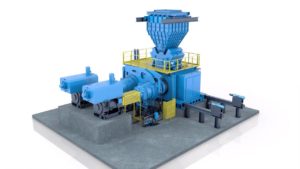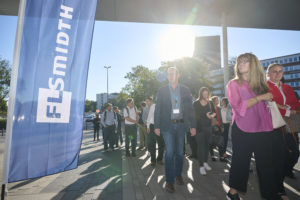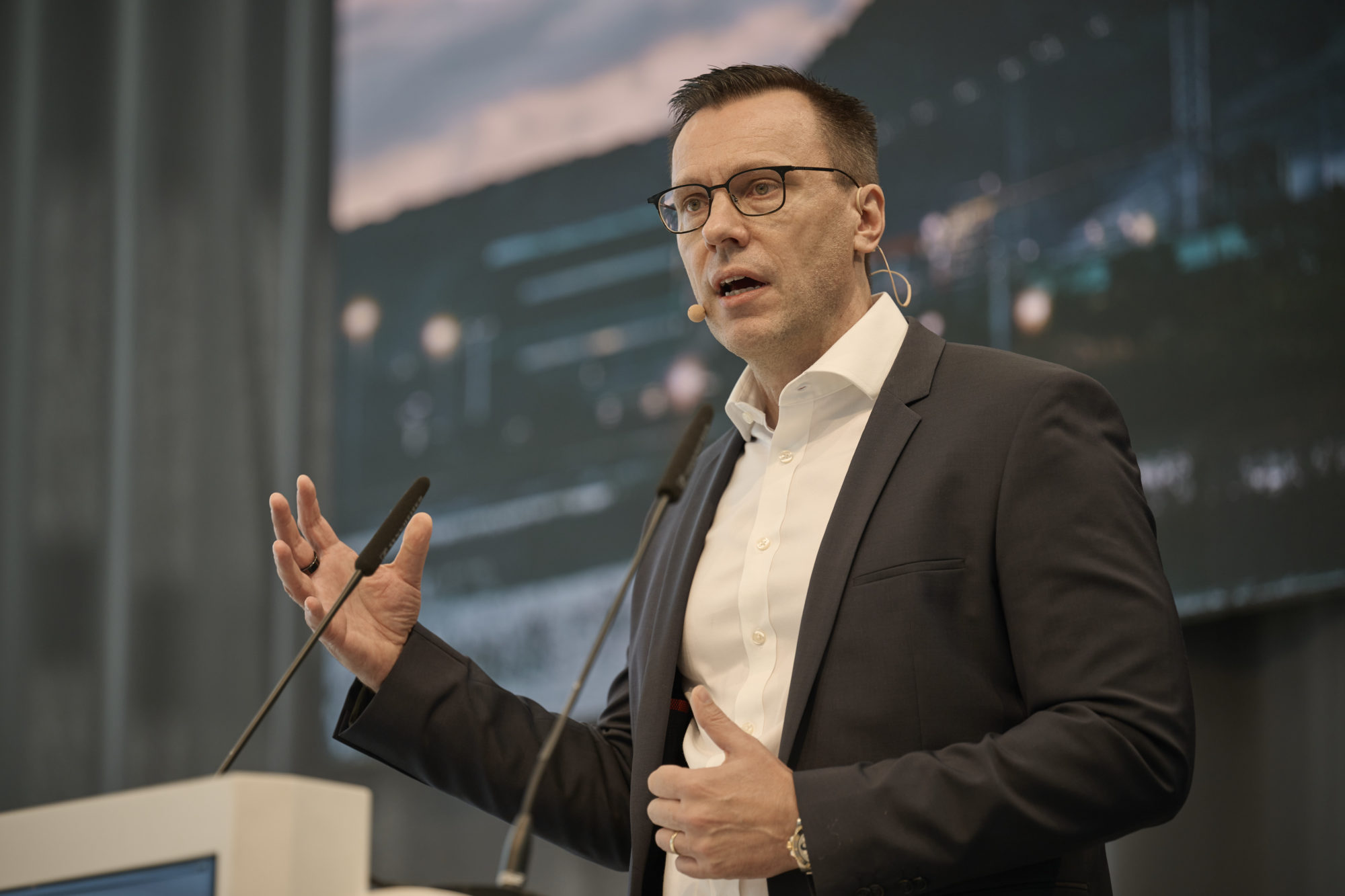On September 1, 2022, one of the largest mining equipment and technology deals in history was completed as FLSmidth closed its acquisition of the Mining business of thyssenkrupp AG first announced in July 2021, following the approval from regulators globally. With immediate effect, thyssenkrupp Mining becomes part of FLSmidth. But what does it mean for the company structure and product lines going forward and where are the potential synergies? IM Editorial Director Paul Moore talked to Mikko Keto, FLSmidth Group CEO, on the day the acquisition closed to go through these questions
Q Can you give some idea as to what has already been achieved in terms of combining teams and strategies so far in the period before closing?
The integration planning has been quite intense and in-depth already prior to the closing of the acquisition, involving a team of 250 plus people working for over a year. We have already changed the FLSmidth regional P&L to a more global structure, which is more business line and product line centric. We felt this was the best way to manage profitability within a mining technology focussed company and at the same time, it helps with the TK Mining integration process. A couple of months ago we already finalised the re-organisation of the principal business lines and introduced a new product line-led structure underneath that, knowing the solutions that would be coming into our portfolio from TK. This has enabled us to plug in product lines more easily into the new structure – into the Crushing and Sizing business line, as an example. It is all part of a ‘one FLS’ go-to-market strategy post completion. We have also been doing planning in the different regions in terms of keeping the best competence we have in the different major mining hubs but at the same time avoiding overlap where we can. We have a team of new central product line managers and new regional business heads. The different product line teams have responsibility for profitability and making sure their technology is market leading. It has been shown within other major mining equipment OEMs that this is the best way to manage technology led businesses in a profitable way. Overall, we have been able to achieve full integration from day one.

Q In a broad sense, what synergies does the combination of TK Mining and FLSmidth bring?
We have made a commitment to €50 million of run rate savings this year – which will come out of the cost base – that means synergies in areas like global locations, sites and facilities but also removing any overlap in middle management layers particularly. There will be additional revenue-related synergies going forward. On the offering side, it is important to emphasise that we are getting some big missing pieces into our portfolio – TK Mining was and is, and therefore we now are, the clear HPGR market leader in mining, both in technology and installed base, which they had built up over many years. Another example is critical competency in the highest throughput, most challenging conveying projects, where again TK Mining has led the way – especially in areas like gearless driven conveying working with Siemens where they and now we are the clear leaders in the market. As an example, TK Mining recently announced a major overland conveying contract in SE Asia for a copper-gold mine involving gearless drives, which now comes under our management. We also had a contract at the same site for delivery of a range of mineral processing equipment. So at that site, we have come together and there are a lot of synergies there.
Q Will existing contracts, warranties and service deals be honoured?
One of the main benefits we see from the acquisition of thyssenkrupp’s Mining business is an improved and more robust customer service and aftermarket offering. The combined FLSmidth and thyssenkrupp installed base will provide a robust growth area for maintenance and optimisation, wear and spare parts and integrated digital and automation solutions. The full range of FLSmidth and the newly acquired equipment and solutions will be fully supported by an even larger team of experts. We will fully use the knowhow of our new TK colleagues and integrate them into our local, 24/7 customer service across all regions. the transaction will not affect any warranties or agreements currently in place. All warranties and agreements with the TK Mining business which are legally valid will be fully honoured by FLSmidth.

Q If we take HPGRs as a specific example, FLSmidth already had an offer with the F-Series – but now you bring in TK Mining’s HPGR Pro technology with >150 installations globally – can you describe the strength of the new combined offering?
What was TK Mining has by far the largest HPGR installed base in mining, and it is also in our opinion the market leading technology, so the HPGR Pro will now be our main offering – it has been proven in the market to offer up to 20% increased throughput capacity, 15% energy savings, and as much as 30% extended roll life so it also helps us progress our MissionZero goals. Yes we have done some HPGR development on our side which is valuable and we think there are aspects of that we can integrate into the HPGR Pro solution – elements of digitalisation but also areas like anti-skew technology for the grinding rolls. Our R&D teams for HPGR are now working together in Essen, doing deep dives into HPGR technology to look at even more product enhancement going forward. And of course, we will continue to support the FLSmidth HPGR customers we had prior to the TK Mining acquisition, who will also benefit from new technology and expertise.
Q What has the customer response been like to the FLSmidth-TK Mining combination?
I can honestly say that the majority of the customer feedback we have had, including the major Tier 1 miners, has been very positive. It was no secret in the market that TK’s mining business was up for sale – and they had a huge installed base, especially in areas like primary and secondary crushers, mills including HPGRs, and within the IPCC space with conveyors and crusher stations. So there was concern as to who the new owner might be – and FLSmidth is seen as a welcome new parent, being itself a large and established player in mining technology plus having a long term commitment to invest in and grow the business. Yes, in some technology areas it does mean slightly reduced competition but I would argue this merger has involved less overlap than some other major combinations that have taken place in mining technology. Customers will quickly notice a stronger combined customer approach and service setup, as well as the benefits of extended mining flowsheet coverage and a more localised approach due to a larger geographical footprint.
Q Is there not significant overlap in terms of primary gyratory crushing?
Actually, no, as despite the fact that both we and TK Mining both have had a significant installed base and market share – the two designs are quite distinct – ours being the Top Service digitally enabled TSUV crushers and theirs the KB Series. It will come down to customer preference so we will keep both designs and will continue to support both designs. It is worth noting that we also acquire two new crushing innovations with TK Mining that bring new options to our customers – namely the eccentric roll crusher (ERC) and the jaw gyratory crusher.
Q Can you talk about the portfolio review process in terms of how you will decide which product lines to keep and which to retire? And does the merger bring even more potential for MissionZero related sustainability and efficiency “wins”?
We are conducting the portfolio review already today and this will continue over the next few months – it will conclude prior to the Capital Markets Day on January 18, 2023. We are looking at competitiveness of the technologies and products on both sides – we want to be number one or two in all of our product lines so there may be some marginal lines that we opt to retire. But we have a lot of strengths beyond crushing – in milling, which includes SAG and ball mills, I would say FLSmidth has a very strong design and installed base but TK Mining also has a lot of installations worldwide. Another strong part of the merged company is screening – where both FLSmidth and TK Mining had leading products and solutions and where following other consolidation in that market, we are now a very clear number two and we want to keep it that way plus grow further. Looking at IPCC, both companies had slightly different competencies – we took a lot from our Sandvik Mining Systems acquisition in 2018 while TK Mining had its own strengths and again has an impressive installed base. One area we are focussed on is further advancing a more modular approach to IPCC crushing stations. While IPCC projects are all bespoke to a certain extent, some standardisation of engineering helps reduce costs for both us and customers. Bringing the opportunities of IPCC to smaller and medium sized mines is also something we will continue to do. Of course, IPCC also brings huge MissionZero related benefits in terms of decarbonisation for miners; something we were emphasising long before the TK Mining acquisition. But MissionZero is also about seeing energy and water savings throughout the full flowsheet – from IPCC through grinding and waste management, where IPCC technology also plays a role in dealing with dry tailings. For brownfield operations and the OPEX phase of mining, I would say FLSmidth already has unique expertise in process optimisation and process control.

Q Will the TK name disappear immediately or be retained for an agreed interim period? What about the Polysius brand?
The TK and TK Mining names relating to mining products and business have disappeared immediately under our control as of September 1, 2022, partly of course as thyssenkrupp AG as a company still exists as a major German conglomerate. We have also been through much of the product branding already to make sure we will not have any TK naming within the technologies themselves. Of course, it will take some time to complete this process and customers may still encounter legacy naming while on the ground integration is still being completed. Regarding Polysius, while this was used by TK for some mining related products in milling, that brand stays with TK for use in their cement business.
Q Will there effectively now be two main mining expertise hubs now – one in SLC and one in Essen? What about manufacturing and fabrication plus service and office locations?
The Midvale complex in Salt Lake City will remain our main R&D hub as it has a large and extremely well equipped world-class lab facility. But it will be complemented by the R&D team in Essen, Germany, especially in areas where TK Mining had greater market footprint or competency. With regard to manufacturing and servicing sites, we have an integration plan for each and every region and of course there are savings to be made – in some mining hubs you can see one service location from another. Which sites we keep will depend on their age, their size, their capacity and their installed equipment such as cranes – several of the former TK Mining facilities were specifically set up to handle HPGR servicing so we will likely retain those. Over in Kazakhstan, FLSmidth has a larger and more recently built facility. In Australia we both had state of the art locations serving different product lines so these will likely be retained. With corporate offices, it comes down to things like location, the size of teams that are based there compared to our future needs, office size and of course the length of the lease.
Q Finally, did TK Mining not have a major exposure to the Russian market?
That situation is actually quite under control, to the credit of the former TK Mining team. It involves just one office with 14 employees. New business in Russia has been suspended and contracts with non-sanctioned customers are being finalised to the extent possible (mainly service related). The outstanding order backlog from Russian activities amounted to around €43 million by end July 2022 while other potential exposure and risks related to Russia remain subject to audit.











